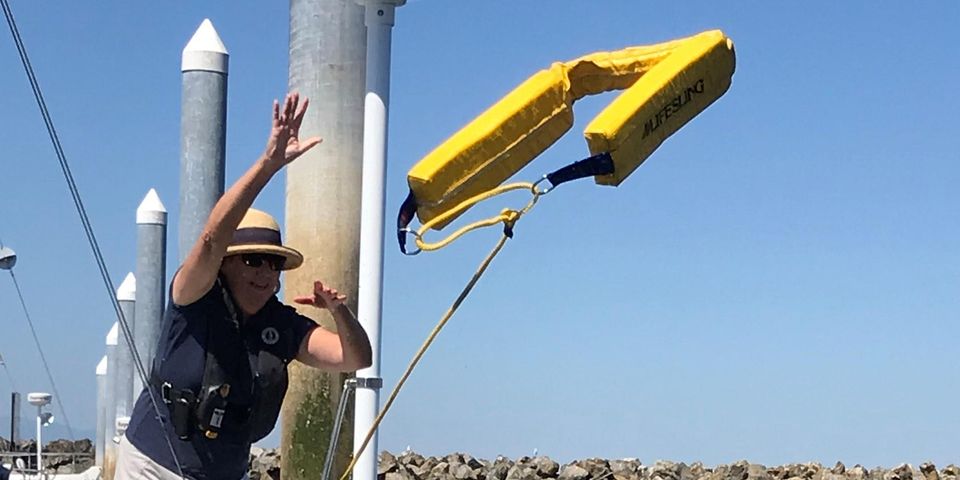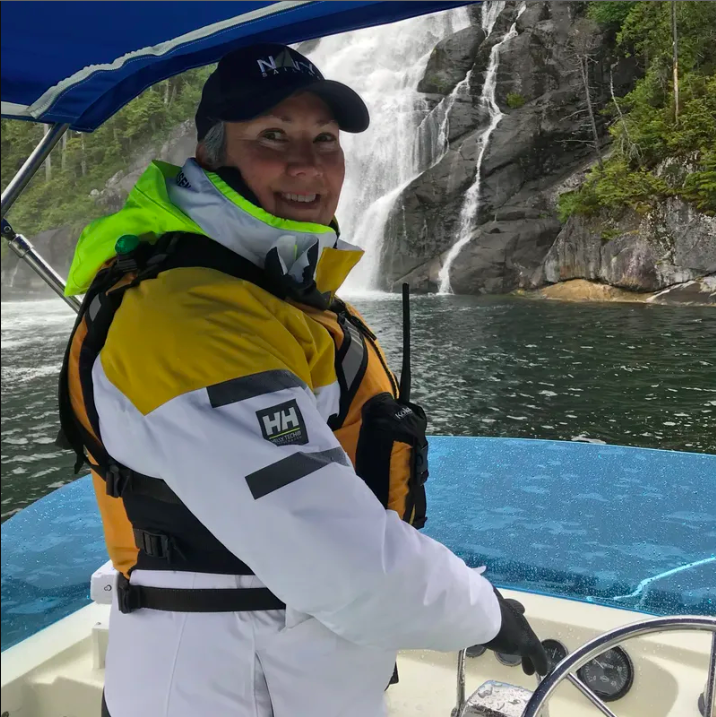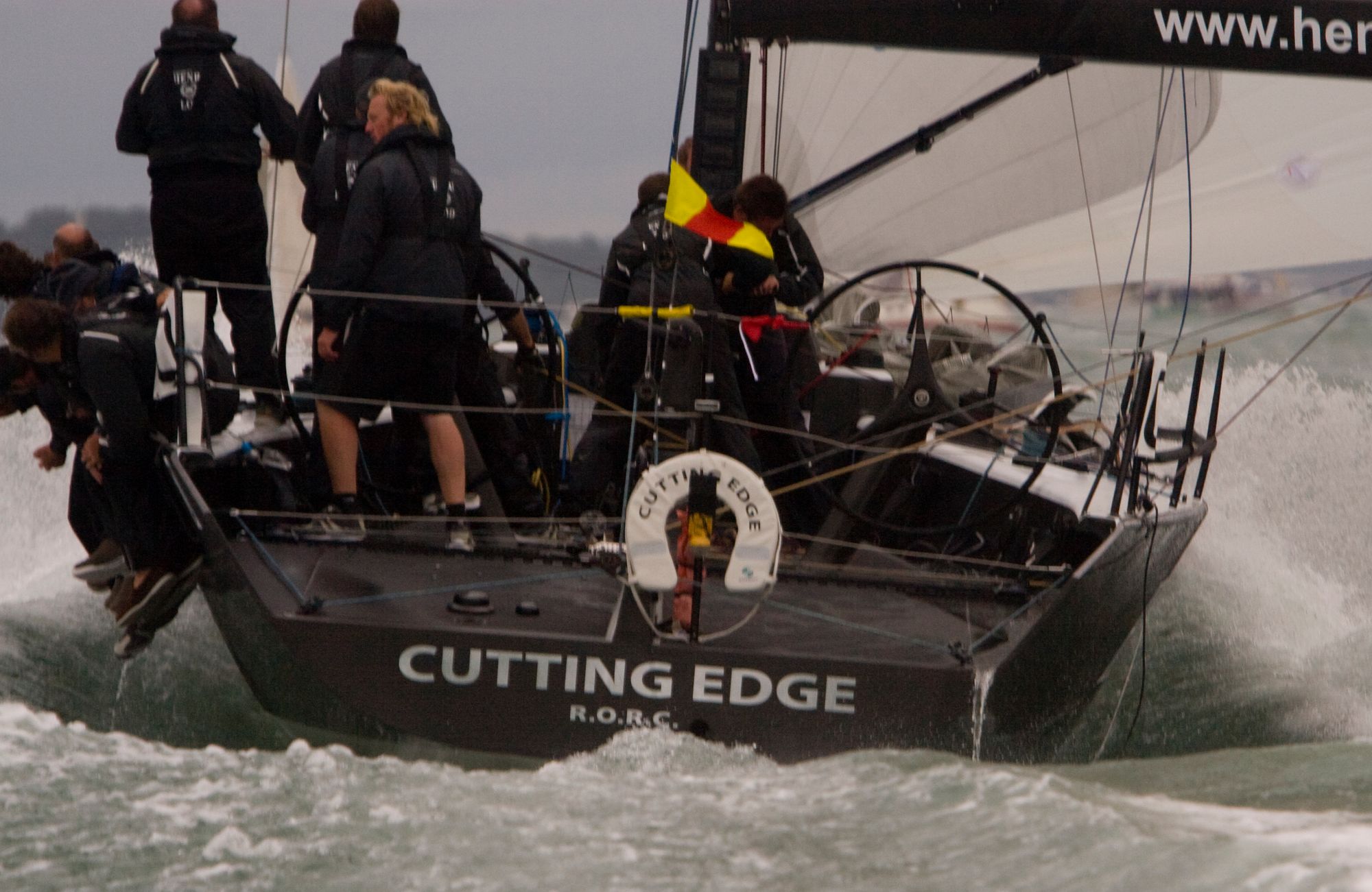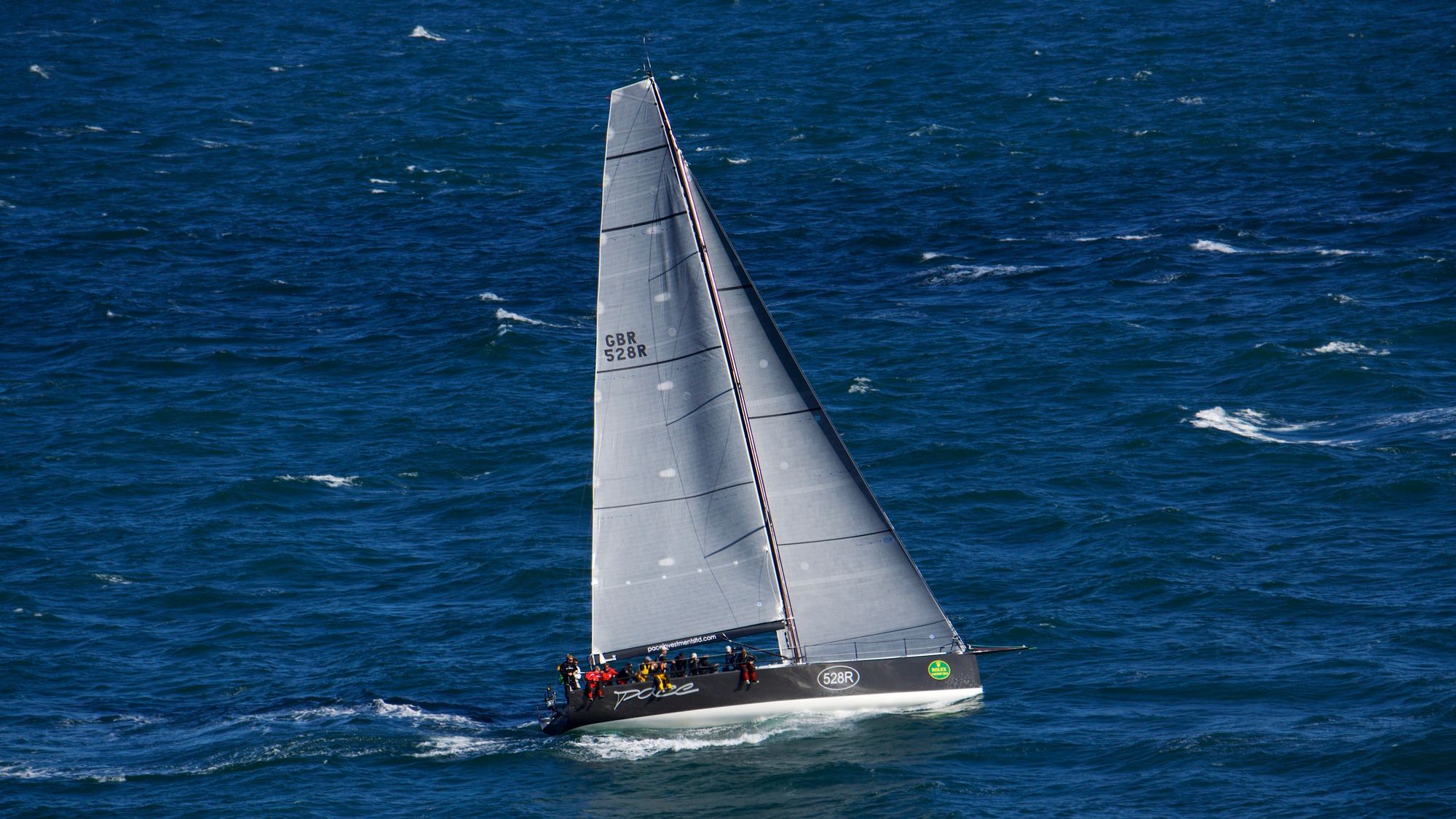Boating safety advocate Margaret Pommert on tech, techniques and the biggest challenge
Through her work, Pommert conducts, coordinates and reviews research on a wide range of safety techniques and scenarios.

Margaret Pommert is passionate and inquisitive, especially about safety on the water.
Based in the Pacific Northwest and well known in the region’s sailing and cruising community, Pommert is a boating instructor and captain with numerous certifications. After a multi-decade career as a management consultant, Pommert fully dedicated her time to the maritime industry in 2015.
Her enthusiasm for more women in boating and boating safety education is apparent in her activities: board member and VP at The Sailing Foundation, which developed the popular Lifesling overboard rescue system; a member-at-large of the U.S. Sailing Safety-at-Sea committee; and skipper of an all-women J/105 team, to name a few.

Through her work, Pommert conducts, coordinates and reviews research on a wide range of safety techniques and scenarios. When a new question or proposed solution arises, she starts by reaching out to her contacts and doing a literature search.
“I don’t want to reinvent the wheel, I like to collaborate,” Pommert said.
And working on research that relates to safety and survival brings an additional level of fervency.
“Anytime you get into something about techniques, people are passionate about their views” Pommert said with a laugh.
Future Tides Founder Cara Kuhlman recently reconnected with Pommert and discussed the role of technology and innovation in boater education and safety.
Here are some highlights:
1. Pommert sees a need for comprehensive research on crew overboard trackers.
The small, wireless devices attach to a crew member’s personal flotation device (PFD or life jacket) and are designed to activate in case they go overboard. The device addresses one of the biggest challenges in crew overboard recovery: tracking the location of the person in the water.
Depending on the model, it transmits the crew member’s location to a chartplotter, app or other vessels monitoring AIS in the area. This localized alert system is different than personal locator beacon (PLB) which transmits the wearer’s location to a remote rescue center.
“I’m not really looking at it from a market standpoint. But just how effective are these things?” Pommert said.
She wants to better understand the device’s false positives, either sending an alert when the crew member is still onboard or not activating when it should. Other questions on her mind are how the trackers work in varying conditions including waves and when submerged.
“It’s not so much that I want to answer them, but I wish somebody would answer them,” she said.
2. Navigation and weather apps have plateaued in terms of functionality, but now the two are blending.
“I think there was a flurry there…when Navionics came out and iNavX and things,” Pommert said.
“It used to be you would have weather apps, and you would have navigation apps…But that’s boring right now. So really the cutting edge of what’s happening is the blurring of the distinction between a navigation app and a weather app.”
Access to this information makes boating safer, especially offshore. In U.S. Sailing’s Safety at Sea course, navigator Stan Honey stresses the power of forecasts.
“It’s crazy not to be paying attention to them,” he says in a training video.

3. Research is underway to address the unique challenges of crew overboard recovery on high performance race boats.
Although they fly around a race course, maneuvering the powered up vessels in a rescue scenario is not easy.
“When they’re going slow, and trying to maneuver in high winds. They are very, very difficult to handle,” Pommert said.
Pommert explained that in general, if someone goes overboard in windy and stormy conditions, it’s going to be harder for one these high performance boats, like a Transpac 52 (TP 52), to get back to the victim in the water simply because of how the boat is designed.
“That’s something that has been observed in multiple situations,” she said.
One such situation includes a fatal accident involving a TP 52 named Imedi during the 2018 Chicago Mackinac Race. A 2019 report on the incident details the crew’s struggles to keep the boat under control in 18-25 knot winds and 5-8-foot seas among other issues that complicated the situation.
Included in the report’s recommendations for the future are to:
“b. Establish control of the boat and ability to hold position before attempting recovery.
c. Know which recovery procedures are best for your boat in the current conditions.
d. Know that the boat itself can become a dangerous factor adding significant risk to any COB recovery attempt.”

In an incident on Puget Sound, a TP 52 named Sonic deployed its Man Overboard Module (M.O.M.) to assist a sailor who’d gone overboard from another boat. Pommert, who closely follows such incidents, described Sonic’s crew as “very practiced” but after deploying the M.O.M. they had to get the TP 52 under control and weren’t able to swiftly maneuver and retrieve the person in the water.
“(That) she was eventually picked up by another boat is kind of testament, again, to the fact that controlling these big boats in heavy winds and seas is challenging,” said Pommert.
Research on the topic is being conducted by several groups around the country. One technique being tested is the “midline lift,” an alternative to traditional recovery methods which utilizes a high performance boat’s larger crew and high power winches.
“Part of the research that we’ve been doing is on that (midline) technique to see how that works,” Pommert said.
“And it’s like a lot of these things, the answer is ‘it depends.”
4. A crucial question remains unanswered: How do you get an unconscious or disabled victim back on board the boat?
Pommert is doing research with Washington Yacht Club to find solutions for this inevitable, often tragic, scenario. They’ve found that without leg straps, which attach to a PFD and then around the crew’s legs, the PFD is pulled over the victim’s head during recovery attempts.
While leg straps are worn by some crew members, especially racing or offshore, they have not yet seen widespread adoption.
“So then the next thing is, you really need to get them into a Lifesling. You need to get the Lifesling around them, because then you can hoist them with Lifesling, rather than pulling off a life jacket,” Pommert explained.
But that is still incredibly challenging. Pommert has developed a technique to get a line onto an unconscious victim so that she can get them into a Lifesling while they’re in the water. She said while it works, it isn’t great and further research is underway.
5. Engineering, techniques and safety products aside, the biggest challenge remains communication to the broader public.
Pommert pointed out that most often, conversations about safety take place between active boaters and not new or casual boaters. These active boaters may own boats, race or teach and spend a lot of time thinking about boating and safety techniques.
“For most people, this is their recreation. This is my job, this is what I do full time,” she said.
Pommert is a boating columnist and often address safety in her articles. She’s created and maintains Seattle on the Water, a free educational resource to help people get out boating in the Pacific Northwest.
In her experience, people want quick answers. They want to know what safety products to buy and then move on. Through training courses, she can reach a more captive audience but it’s only a fraction of those getting out on the water.
Pommert reiterated multiple times that the answer to most safety questions is “it depends.” The best method depends on the boat, the crew and the situation. To prepare for the best possible outcome, crews need to have as many techniques as possible in their toolkits.
“How do we reach those people where they casually bought a boat and they’re not going to go to Safety at Sea, they’re not going to take an ASA class. They’re not going to do any of that stuff,” Pommert asked.
“But they have just as much right to live. Their families have just as much right to them living. How do we get the message out to them?”
